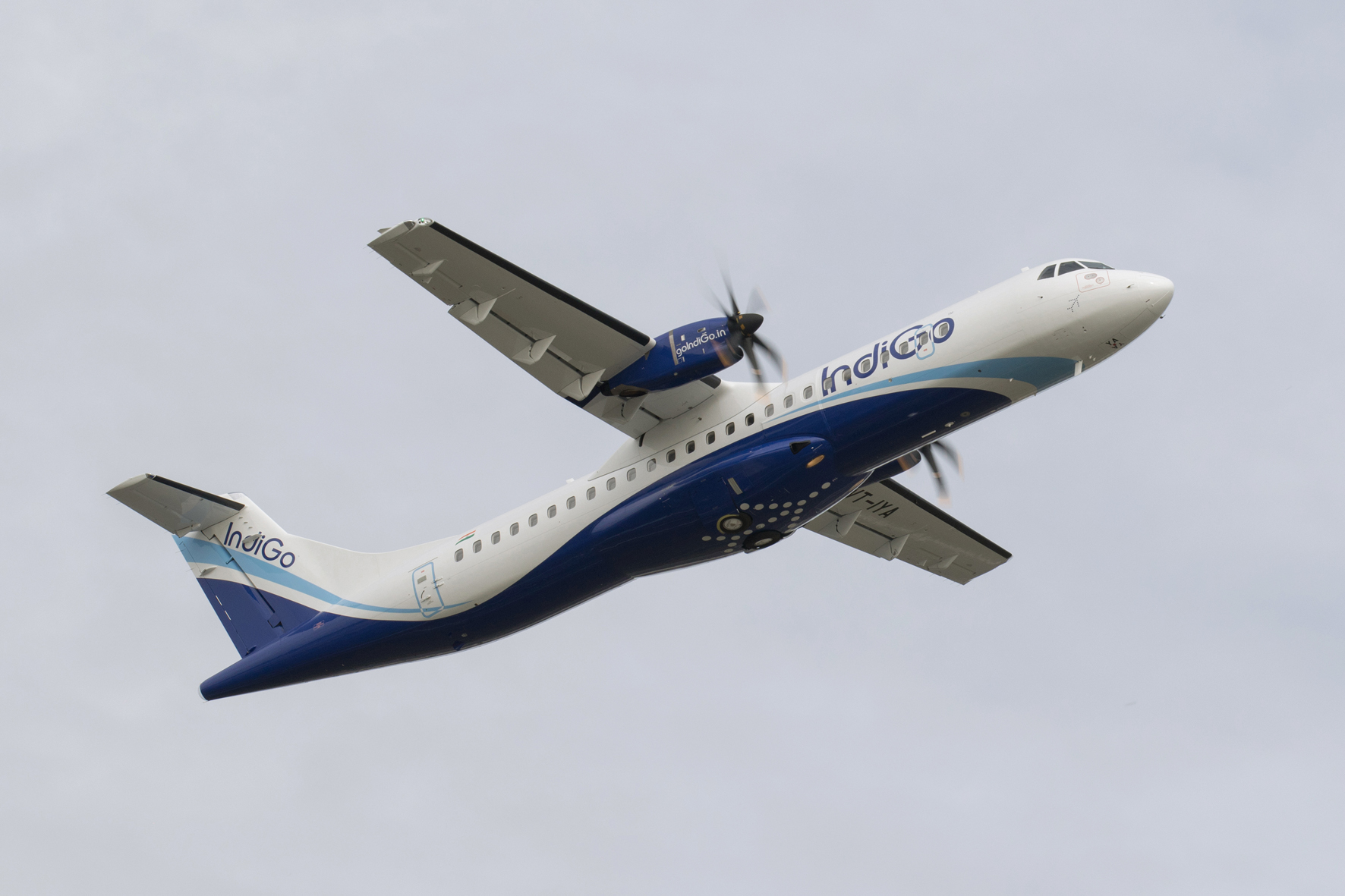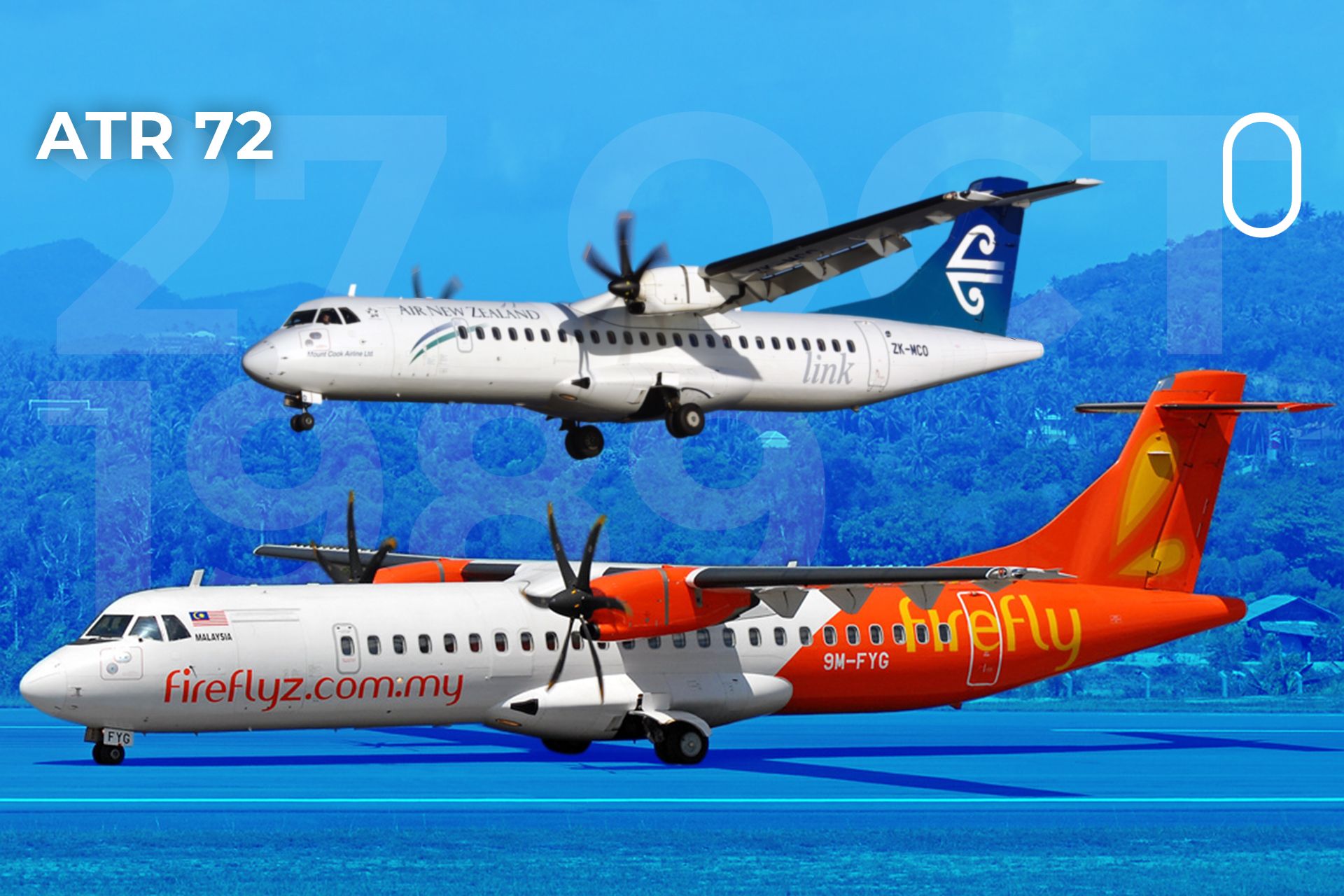ATR 72 Overview: Atr 72 Plane
The ATR 72 is a twin-engine turboprop regional airliner, known for its versatility and fuel efficiency. It’s a popular choice for short-haul routes, connecting smaller cities and towns, and offering a comfortable travel experience for passengers.
History and Development
The ATR 72 was developed by ATR, a joint venture between French aerospace manufacturer Airbus and Italian aerospace manufacturer Leonardo. Its development was a collaborative effort, drawing on the experience of both companies in the turboprop aircraft market. The ATR 72 is a direct descendant of the earlier ATR 42, with a larger fuselage and increased seating capacity. It first flew in 1988 and entered service in 1989.
Specifications
The ATR 72 boasts a robust design, featuring a high-wing configuration with a T-tail. It is equipped with two Pratt & Whitney Canada PW127 engines, providing ample power for efficient takeoff and landing. Here are some key specifications:
- Length: 27.15 meters (89 feet)
- Wingspan: 27.05 meters (88.7 feet)
- Height: 8.58 meters (28.1 feet)
- Maximum Takeoff Weight: 23,000 kilograms (50,700 pounds)
- Engines: 2 x Pratt & Whitney Canada PW127
- Maximum Cruise Speed: 520 kilometers per hour (323 miles per hour)
- Range: 1,500 kilometers (932 miles)
- Seating Capacity: 70-78 passengers (depending on configuration)
Configurations and Variants
The ATR 72 comes in various configurations and variants, each tailored to specific operational requirements. Here are some key differences:
- ATR 72-200: The original version of the ATR 72, with a seating capacity of 70-78 passengers.
- ATR 72-500: An upgraded version featuring improved avionics, more powerful engines, and enhanced fuel efficiency.
- ATR 72-600: The latest variant, boasting even more powerful engines, a redesigned cockpit, and advanced avionics systems. It offers a larger seating capacity of up to 78 passengers.
ATR 72 Operations

The ATR 72 is a versatile aircraft that plays a crucial role in various sectors of the aviation industry. Its ability to operate on short runways and in challenging weather conditions makes it a popular choice for regional airlines, cargo operators, and special missions.
Typical Roles and Applications, Atr 72 plane
The ATR 72 is primarily designed for regional air travel, connecting smaller cities and towns with major hubs. Its fuel efficiency and low operating costs make it a cost-effective option for airlines serving these routes. Additionally, the ATR 72 is often employed for cargo transportation, particularly in remote areas with limited infrastructure. Its ability to land on unpaved runways makes it ideal for transporting goods to isolated communities. The aircraft’s versatility extends to special missions, such as aerial surveillance, medical evacuation, and disaster relief.
Operational Procedures and Safety Protocols
ATR 72 flights adhere to strict operational procedures and safety protocols to ensure the safety of passengers and crew. These procedures include comprehensive pre-flight inspections, rigorous maintenance schedules, and standardized pilot training programs. The aircraft is equipped with advanced avionics systems and safety features, such as ground proximity warning systems (GPWS) and flight data recorders (FDRs), to enhance safety and minimize risks.
Comparison with Other Aircraft
The ATR 72 competes with other turboprop aircraft in its class, such as the De Havilland Canada Dash 8 and the Embraer EMB 120 Brasilia. Compared to these aircraft, the ATR 72 offers a balance of fuel efficiency, passenger capacity, and operating costs. Its twin-engine design provides redundancy and enhanced safety, while its high-wing configuration offers improved visibility for the pilots.
The ATR 72’s fuel efficiency is a key advantage, making it a cost-effective choice for regional airlines and cargo operators.
The ATR 72 has a maximum passenger capacity of 78, which is comparable to other aircraft in its class. Its operating costs are relatively low, making it an attractive option for airlines seeking to minimize expenses.
ATR 72 Technology and Design

The ATR 72 is a marvel of modern aviation engineering, boasting a unique blend of advanced technologies and innovative design elements that contribute to its impressive performance and efficiency.
Turboprop Engines
The ATR 72 is powered by two Pratt & Whitney Canada PW127 turboprop engines, known for their reliability and fuel efficiency. These engines are specifically designed for regional aircraft, providing a balance of power and economy. The turboprop design utilizes a propeller to generate thrust, which is more efficient than jet engines at lower speeds and altitudes, making it ideal for short-haul flights.
Wing Design
The ATR 72 features a high-wing design, which provides several advantages. The high wing position enhances visibility for the pilots, allowing for better situational awareness. Additionally, it contributes to greater stability and a smoother ride for passengers, particularly in turbulent conditions. The wings are designed with a high aspect ratio, which increases lift efficiency and reduces drag, resulting in improved fuel economy.
Flight Control Systems
The ATR 72 incorporates advanced flight control systems, including a digital fly-by-wire system. This system enhances flight safety and maneuverability by providing electronic control of the aircraft’s control surfaces. It also includes features like automatic trim, which adjusts the aircraft’s balance for optimal flight performance.
Technological Advancements
The ATR 72 is equipped with a suite of modern avionics and navigation systems, including a glass cockpit, weather radar, and a ground proximity warning system (GPWS). The glass cockpit utilizes large, high-resolution displays to present critical flight information to the pilots, improving their situational awareness and decision-making. The weather radar provides real-time information about weather conditions ahead, allowing for safer navigation and route planning. The GPWS alerts pilots to potential ground collisions, enhancing safety during takeoff and landing.
Environmental Impact
The ATR 72 is known for its environmental friendliness, with a focus on minimizing fuel consumption and noise emissions. Its turboprop engines are inherently more fuel-efficient than jet engines, particularly at the speeds and altitudes typical of regional flights. Additionally, the aircraft’s design features, such as its aerodynamic shape and high aspect ratio wings, contribute to reduced drag and fuel consumption. The ATR 72 also employs noise reduction technologies, such as propeller blade design and engine silencing techniques, to minimize noise pollution during operations.
Yo, ever heard of the ATR 72? It’s like the trusty sidekick of the skies, perfect for those shorter hops. It’s got a sleek design, and it’s known for its reliability. Wanna learn more about this awesome plane? Check out this link: atr 72 plane.
Yeah, it’s a real workhorse, and it’s super popular in places like Indonesia.
ATR 72 planes are pretty common in Indonesia, right? They’re known for being reliable, but unfortunately, sometimes things go wrong. A few years back, there was a tragic incident involving a Voepass plane crash that really shook everyone up.
It was a reminder that even with the best technology, accidents can happen. It’s a good thing that safety measures are always being improved to prevent these kinds of tragedies in the future, so we can keep flying with confidence in ATR 72 planes.
